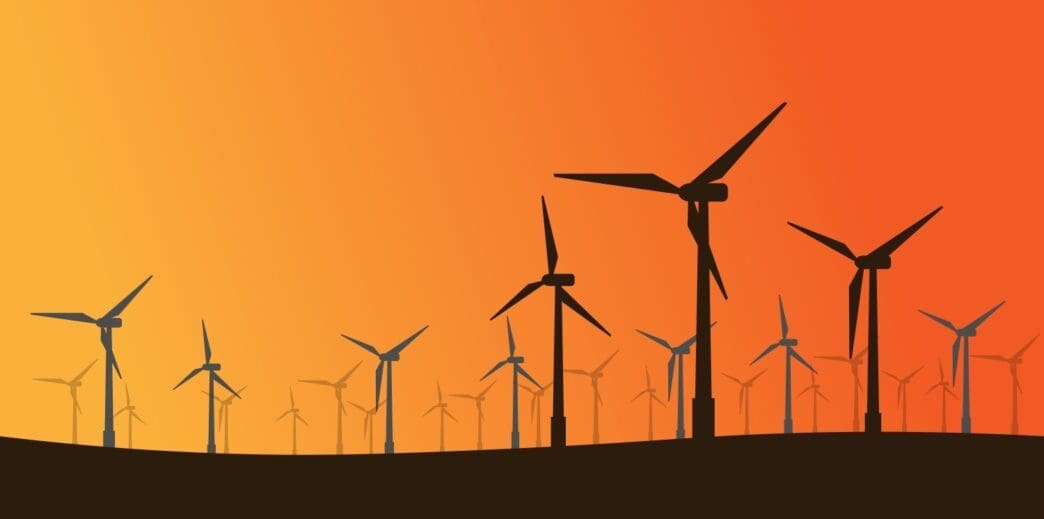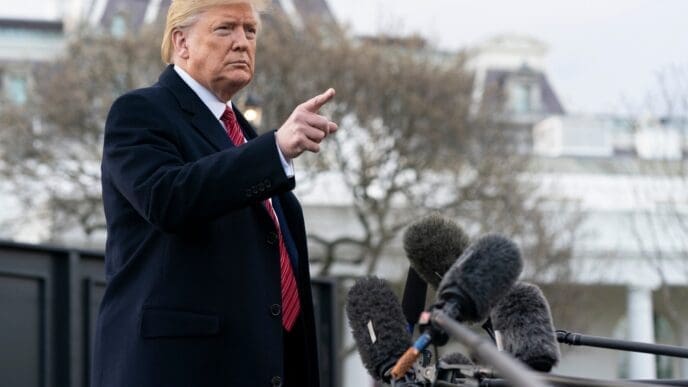Executive Summary
The Story So Far
Why This Matters
Who Thinks What?
The Trump administration is moving to significantly roll back clean energy initiatives and prioritize the expansion of U.S. natural gas exports, a shift that experts warn could reshape both domestic and global energy markets for decades. This strategic pivot aims to cut green energy subsidies, particularly for wind and solar, while boosting fossil fuel production, nuclear, and geothermal energy. Critics suggest these actions risk increasing consumer prices, stifling innovation, and undermining American competitiveness in key industries, at a time when energy demand and costs are projected to rise sharply.
Administration’s Energy Policy Shift
President Trump has vocally criticized renewable energy sources, stating on Truth Social that states relying on “WINDMILLS and SOLAR” are experiencing “RECORD BREAKING INCREASES IN ELECTRICITY AND ENERGY COSTS.” He labeled it “THE SCAM OF THE CENTURY!” and declared, “We will not approve wind or farmer destroying Solar. The days of stupidity are over in the USA!!!”
Upon his potential return to the White House, Trump’s agenda focuses on increasing the production and export of fossil fuels, including liquefied natural gas (LNG). His proposed budget would enact major cuts to the burgeoning clean energy sector by phasing out green energy subsidies initially implemented by the Inflation Reduction Act (IRA) under the Biden administration.
As part of this energy plan, President Trump also ended the Biden administration’s 2024 pause on natural gas exports. White House spokesperson Harrison Fields emphasized this move as a significant priority and success, noting strong international demand for American LNG.
Economic and Expert Projections
The Council of Economic Advisors has estimated that restarting LNG exports could boost the country’s gross domestic product by an additional 0.56 to 1.90 percent annually by 2035.
However, Jon Elkind, a senior research scholar at the Center on Global Energy Policy and former Obama-era assistant secretary for international affairs at the Energy Department, argues that efforts to “unleash” American energy are incomplete without renewables. He questions whether the U.S. will be an innovator and market leader or a laggard in a world of rapidly changing energy technology, characterizing the administration’s actions as “ambiguous.”
In 2023, renewable energy sources contributed just over 20 percent of the U.S.’s energy production. Under the Biden administration’s IRA, projections from the American Clean Power Association indicated that approximately 40 percent of the nation’s electricity would come from renewables by 2030.
Conversely, independent research organization Rhodium Group projects that under Trump’s proposed policies, the share of clean energy in the U.S. grid could shrink by 57 to 62 percent over the next five to ten years.
Industry Perspectives and Concerns
Energy security experts caution that a less diversified energy mix could have widespread consequences. A report from SAFE, a nonpartisan energy security think tank, and the Energy Security Leadership Council highlights that a diversified domestic industry is crucial for reducing U.S. reliance on foreign energy sources and enhancing national security.
The report asserts that a “shift to new technologies” is “critical to national security,” as dependence on volatile oil markets can constrain U.S. foreign policy. It also notes that, unlike fossil fuels, renewables are immune to price volatility because they do not require fuel inputs.
Rachel Fox, director of policy, economics, and regulatory affairs at the American Petroleum Institute, the largest oil and natural gas lobbying group, suggested that natural gas and clean energy can be complementary. She stated that natural gas plays a vital role in grid reliability and energy security, serving as a “natural complement to supporting renewables on the grid.”
Fox also emphasized the desire to see natural gas play a role “pretty much everywhere” due to its abundant, low-cost production and its potential for export to support international energy security.
Rising Demand and Political Opposition
Rising electricity consumption is a significant concern for American consumers, with demand expected to increase by 35 to 50 percent by 2040, according to American Clean Power. Electricity prices were 5.5 percent higher on average in July compared to the previous year, partly due to the expansion of energy-intensive industries like data centers and artificial intelligence.
Avery Ash, SAFE’s senior vice president, pointed out that while there is agreement on growing electricity demand, “the only immediate solutions are the sorts of renewable energy such as wind and solar that are both quick to deploy and already in the interconnection queue.”
Democrats in Congress have criticized the administration’s stance on renewables, linking it to high energy prices. A group of senators argued that Trump’s policies are “strangling America’s cheapest and quickest-to-deploy sources of energy — solar and wind — by hiking costs, creating insurmountable permitting hurdles and injecting uncertainty into the market.”
Fox, however, countered that natural gas “has the best chance of meeting the type of demand that we’re going to see coming in the next decade.”
Long-Term Impact on Competitiveness
Elkind reiterated that de-emphasizing renewables makes addressing energy challenges “harder.” He suggested it complicates efforts to develop capacity for artificial intelligence and data centers, avoid household electricity cost increases, and support new manufacturing across the U.S.
Wayne Gray, a professor of economics at Clark University, warned that Trump’s policies could reduce incentives for U.S. companies to develop new clean energy products, potentially allowing European or Chinese firms to “leapfrog ahead” and gain control over these markets.
The administration’s move to curtail offshore wind projects, a rapidly growing market, could also have ripple effects on other critical industries like shipping and steel, according to Elkind. He posed the question of what industries will drive U.S. economic competitiveness and job creation in the future.
Despite these concerns, some private companies continue to invest in the emerging renewable market. However, Ash cautioned that if electricity supply cannot meet demand, sectors such as artificial intelligence and electric vehicles could face significant hurdles. He emphasized that the critical challenge is meeting “the energy power needs of tomorrow,” asserting that without sufficient energy, the U.S. will struggle to compete globally in future industries.














